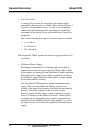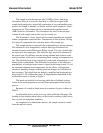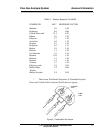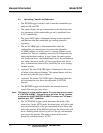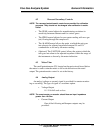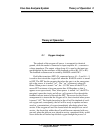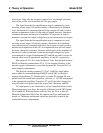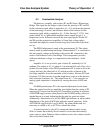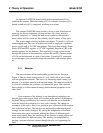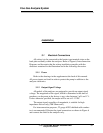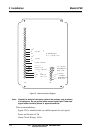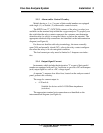
2-2
2 Theory of Operation Model 9700
TELEDYNE BROWN ENGINEERING
Analytical Instruments
electrolysis. Only after the oxygen is reduced to a low enough concentra-
tion can the cell be used to measure the flue gas sample.
The signal from the first amplification stage is connected to a non-
inverting second stage (A2) which contains a thermistor in its feedback
loop: the thermistor is mounted adjacent to the oxygen cell and is used to
measure temperature of the cell rises and cell output increases, thermistor
resistance decreases and the gain of amplifier A2 decreases in order to
maintain a constant net output voltage for a given concentration of oxygen.
The signal from the first amplification stage is connected to a non-
inverting second stage (A2) which contains a thermistor in its feedback
loop: the thermistor is mounted adjacent to the oxygen cell and is used to
measure the temperature of the cell. As temperature rises and cell output
increases, thermistor resistance decreases and the gain of the amplifier A2
decreases in order to maintain a constant net output voltage for a given
concentration of oxygen. Potentiometers R7 and R8 are used to correct for
internal offset errors in operational amplifiers A1 and A2, respectively.
The output of A2—6 is scaled to about 2 Volts, then divided down by
SPAN (calibration) potentiometer P1 to 1 Volt, nominal. Readout of the
percent oxygen concentration is provided by meter M1. Resistor R11 is a
meter trimpot potentiometer.
The analyzer circuitry requires 115 VAC, 50/60 Hz, single phase
power which is connected through RANGE switch SW1 to the fused
primary of transformer T1. Rectification, by diodes D1 through D4 con-
nected across the transformer secondary, provides +/- 15 VDC unregulated
to the operational amplifiers. Capacitors C7 and C8 provide a bypass for
stray electrical noise picked up on the power lines, transients, and RF.
AC input power is also connected to a Triac controlled heater circuit.
When temperature rises above the setpoint of thermal switch SW3, heater
H1 is turned off. When the heater contacts close, the Triac is shut off.
When the temperature falls below the setpoint, the Triac and heater are
turned on. The heater and thermal switch are physically located in the
combustible sensor compartment.



